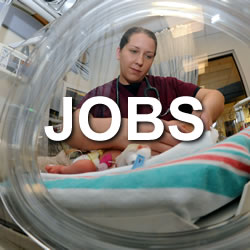Destiny at Sea
Dr. X | Dr. X

image by: Dave Ang
What about Dr X and my Destiny! I was still looking for a big case where I would make a difference
This was to be my last day on the boat. I remember now the feeling I had conveyed to my stepmom in one of my last emails. The cruise had no excitement so far. For three weeks, nothing. What about me and my Destiny! I was still looking for a big case where I would make a difference. At this point I was convinced my blogger days had come to their end.
But, fact is stranger and more entertaining than any fiction could possibly be. A few hours later, I, indeed, got more destiny and adventure than I could have ever bargained, undoubtedly making it one of the most hectic 48 hours of my life…
All of a sudden a loud bang shook the Medical Center. I thought one of the oxygen tanks had tipped and exploded. I got up from my desk in the doctor’s office and walked to the door that led into the clinic. It was Sergio, the deck engineer, who on shore would be called a handyman. He is the on duty deck engineer and is accompanied by two Spanish looking men who said nothing. They are all wearing their white engineer jump suits. He was clearly annoyed.
“Doctor.” He spotted me. “Why you write the engineer office complaining about the toilet. I get messages every day for three weeks now. I come and fix toilet, it works fine, then I get new memo. Why you write? The toilet is fixed.” He was clearly annoyed. Carole, one of our new nurses, had been trying to interrupt the animated engineer. “It wasn’t the doctor, Sergio, it was me. His terminal was the only one that was working so we emailed you on it.”
He turned. “Oh, sorry doctor.” Then to Carole, “So why you write us every day?” “Because it plugs up every day. Why can’t you fix it?” “Look, doctor,” he looks frustrated, his hands are flailing about, “follow me. I show you. I show you all once again. Come, come.” He motions for us to follow.
Within a few seconds he and I and his two assistants are crowded in and about the visitor’s restroom, most bent over, hands on knees. Tiny Carole was at the back, stretching up on her toes, I’m sure seeing nothing. Sergio started flushing the high pressure toilet, time after time. “Look, look. It works fine. More flushes. “People put these paper towels in the toilet, that is why she clogs up. Don’t you think, doctor?” I couldn’t recall any of my training that dealt with this sort of thing. And I knew better than to get in the middle of this conflict. “I’m not sure this is in my skill set, Sergio. I’ll take your word for it.” It did indeed seem to be working fine. Sergio walked out briskly, assistants a-tow.
So started one of my last days on board. A good start to what awaited us next…the Captains going away dinner.
Sunday, Galveston Port Day, the Captain would disembark, contract completed, for his home city of Venice, for a three month vacation. Buddy and I and all the senior officers were there. Dr. Velasquez had gone to the Grand Caymans for a vacation. She was replaced by Buddy, who is showing up for the second time in this blog. He is in his 70s and was trained while in the army, having seen action in Viet Nam. He’s a good doctor.
The entertainment Captain, Henry, received a phone call during dinner, just when we were starting our entrees. He said something to Buddy who then looked over to me. “One of the dancers has twisted her ankle during rehearsal. Do you want to go or should I?” What better assignment could a young man ask for? Henry whisked by me, then looked back, he’s South African. “Do come along now, Doctor.” He’s half my age and in pretty good shape. I tried to keep up. I could see down I-95 to the bow of the ship where the dancers’ dressing room was.
Henry was way ahead, he turned to see where I was. He looked worried about something. It must have shown. I was getting a squeezing in the center of my chest. A gentle nudge, telling me to slow down. But it was just a few paces farther. The nudge was now a giant fist inside me, pushing me back, slowing me down. Henry went to the elevator and held the door for me. “Are you alright, doctor?” Time to rest in the elevator. The squeeze eased. “I’m fine, Henry. Just fine”
We got to the dancer who was up walking around; no limp at all. I asked her to sit in a nearby chair. I knelt down and examined her ankle. Nothing. No positive findings. “May I please dance tonight, doctor?” She’s South African, too. I medically cleared her for the show, due to start within a few minutes. Then some of the other dancers approached. They were curious as to how their lead dancer-friend was doing. Several of them actually, by now wrapped in towels, came over. “Is she to be alright, doctor?”
They drew closer, the squeeze was back. I thought, I’ve been at sea way too long. One of the others, “He looks quite pale.” The dressing room is just a few paces from the Medical Center. Next thing I knew Carole was there with her Brightstar satchel, on shore known as code blue bag. But the pain was gone now. I was able to walk to the Medical Center. Buddy was already there.
I had taken my daily aspirin dose earlier in the day and required no further meds since I was pain-free. He was looking at my EKG. Buddy was an army emergency doctor, good at trauma but sometimes, I had observed, not noticing subtle EKG changes. I was hoping—. “This isn’t a normal EKG, Jim.” I was having no pain and was able to convince him they were all old changes that were not representing acute disease. I’d had abnormal EKGs ever since my first EKG when I was thirty and applying for a life insurance policy. I passed the treadmill at that time. And I passed another treadmill in 2005 when I applied for another insurance policy.
My enzymes stayed normal for two hours and I was able to convince Buddy to let me spend the night in my cabin, promising to call if I noticed anything. We both decided I probably had stable angina. And we both knew that as far as maritime medicine was concerned, it could well be a career ending development. Even if I were to pass another treadmill, symptomatic heart disease, even stable disease, could preclude any at-sea contracts. A sick doctor puts the whole boat at jeopardy.
We would call Miami, our home office, in the morning. As I settled down in my room for the evening, I was worried. Was this my final adventure? Was this to be my last adventure? Huddled up in my cabin, taken off-duty? It was the next day and I would be medically disembarked on Sunday, a week early. There was another doctor, Dr Mao, scheduled to come aboard in Galveston. I had been asked to break him into the Ship’s Physician job, but it looked like he’d have to learn on the job with Buddy coaching.
The plan was for me to have a cardiac evaluation before I would be allowed to take any more contracts with Festival cruise lines. The problem was that despite normal labs and an unchanging EKG, the EKG was still abnormal. And I didn’t have access to any old EKGs that would show no recent changes, so I had a couple of unscheduled days off. Buddy would see all the patients until Dr. Mao came on board.
It was a low point for me. I had hoped to leave in style. Not like this. The phone rang. “Doctor X.” I loved the way Carole would say my real name. “Can you come to the Medical Center please? Right away?” “Of course.” Curious as to what was going on, I hurried to the Center. Carole had sounded tense, not in her usual state of self control. “Buddy needs your help on a case. It’s the Captain.” I wasn’t supposed to be seeing any patients, but this was the Captain.
I wondered if I should call my medical director in Miami and tell him what’s going on. I decided it would take up too much valuable time to chase him down. And I hadn’t evaluated the situation yet. I was in the Medical Center in a few seconds since my quarters were right across the I-95. “Good morning, doctor.” Carole was clearly worried.
The captain was in the critical care room, chest bare, razors whacking off its thick Italian hair. “Ouch!” He complained to Diedre, our tall South African head nurse. Buddy waved me closer, holding out an EKG. “He’s had this before, several times. He gets a fluttering in his chest and today he has pain in his left elbow as well. It usually goes away in two or three minutes, but this time it has persisted.
“Ouch!” They had to move one of the patches. Carole handed Buddy the EKG. He studied it for a few moments. Then to the nurses, “I want him to have a nitro, an aspirin, and I want cardiac enzymes done. And give him morphine, 10 milligrams IV.” He was going down the ACS trail, or acute coronary syndrome protocol. I noticed the Captain looked, in general, pretty good. He was calm, with no sweating. Buddy handed me the EKG. I could see where it might be interpreted as showing ischemic changes, but it wasn’t an ACS EKG.
By now word had spread through the boat that the Captain was having a heart attack. Quickly, the Medical Center was filling up with people, a lot of people. All worried appearing Italian senior officers, lots of stripes. They were worried about their friend. I knew from past experience that he was in little danger and would be converted to a normal rhythm with a little electricity.
Carole went to the waiting area, there were about eight people waiting to be seen for something or other. Each a crew member. One after another she stabbed a pen at them in the air. “Why are you here?” “Come back, come back,” etc. They were gone, obediently. The critical care room was shoulder to shoulder with Italian senior officers, many of whom I’d never seen before. I squeezed through to get to the Captain. I had been in the doctor’s office double checking something.
I had to be carefully diplomatic. We had an audience and I was about to change course in the patient’s care as I took over the case from Buddy. I didn’t want them to think their doctors were conflicting, but I had to be sure the Captain was treated appropriately.
The beep of the monitor had suggested to me that the Captain was in some sort of rhythm disturbance. The heart beat was regular and fast at a rate of 140. One look at the EKG and it was obvious. “Buddy, I don’t think it’s a coronary syndrome an ACS, it looks like atrial flutter. This isn’t ST depression, it’s just the down slope of the F waves. And these p waves are blocked, it’s a two to one block.” I waited. Utter silence. “It’s a question now of whether we treat him with rate control or rhythm control.”
It was a critical moment in the case. All waited for what seemed an eternity, then Buddy spoke. We needed to change strategy, and now! “Your call.” He stepped back, looking at the monitor. As I’ve written before, we all have our areas of strength, Buddy was a fine army ER doctor, they don’t see as many cardiac cases as a community based doctor might.
This was similar to Dr. Velasquez’s case toward the beginning of the Sea Journey log. And much had been written about treatment of acute atrial flutter or fibrillation in the last two or three years. Untreated it is potentially life-threatening, usually due to blood clots breaking off and traveling to the brain or one of the coronary arteries. The answer was easy: Rhythm control and fast. Someone would get to electrocute our Captain.
A few minutes later we were ready. I had asked the nurses to load him up with a heparin-like blood thinner, sometimes recommended by our consultants, and Buddy would administer the Ketalar, a procedural sedation drug. The Captain would be out like a light.
“Everybody clear.” For dramatic affect, I asked the Italians to back up and not touch any bare metal. The “clear” is for dramatic effect, also. We know now that if you’re touching a patient who gets shocked, you feel nothing, and you get less electricity than one of those BMI machines delivers at Abercrombie and Fitch.
But as Shakespeare said, “It’s all for the show.”
Some of you readers have heard the noise a defibrillator unit makes when it’s charging up. It is similar to a low pitched whistle or whine, then gradually as the charge grows it slowly increases in pitch and intensity. Finally, it’s a sustained blaring siren demanding to be discharged. I pushed the Synch button so the charge would deliver at the correct time of the heart’s cycle. Then I charged the machine to 50 joules. One last look as the machine began its whine. I checked in with the team, one person at a time.
At Buddy: “He’s out.” The Ketalar had done its job. At Carole, who had been helping with the Ketalar: “Ready, Doctor X.” At Spock: “Phasers ready, Jim.” I just thought about Spock, he wasn’t really there. Finally at Diedre: “Recording, Poppa.” She always called me that, because I’m a grandfather and that’s what the grand kids call me. I love nurses, even married a few of them.
One last look around the room, all was clear. The defibrillator was wailing at its highest pitch, ready to discharge. I took in the scene. All eyes were on me, Doctor X. My destiny and purpose had found me after all. I knew this was, perhaps, to be my last hurrah, my last adventure. I had been called out of my cabin to make a difference. Here, to my Captain’s bedside.
I pushed the button…
About the Author:
Come aboard as Dr X's Private Sea Journal reveals with great story telling and wit the practice of medicine on the high seas including some of the deep dark secrets of maritime medicine, as well as Dr X.

Introducing Stitches!
Your Path to Meaningful Connections in the World of Health and Medicine
Connect, Collaborate, and Engage!
Coming Soon - Stitches, the innovative chat app from the creators of HWN. Join meaningful conversations on health and medical topics. Share text, images, and videos seamlessly. Connect directly within HWN's topic pages and articles.
















